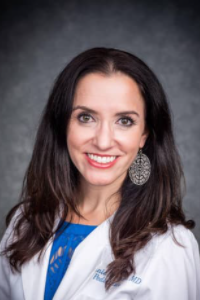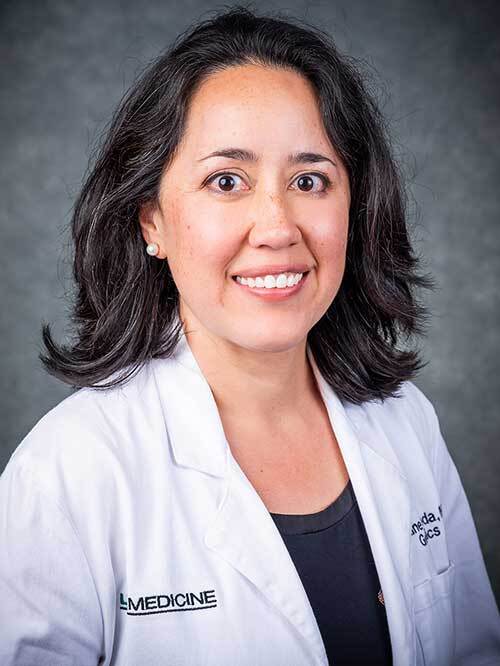Before UAB medical students delve into organ modules and begin developing their clinical professional skills, they first learn about how their future as doctors can impact communities and societal issues that play big roles in determining health.
This course, taught in the new students’ first two weeks of medical school, is called Patient, Doctor and Society. It’s been a long standing part of the curriculum, but when Caroline Harada, M.D., and Stephanie Berger, M.D., took over as course co-directors three years ago, they made changes to the class to give it a community-focused relevance.
“In week one, we try to help students begin to adopt the professional identity of physicians, and in the second week, we try to help them understand that there’s a lot more than just the physician-patient interaction,” said Harada, associate dean for Community-Engaged Scholarship in school and associate professor in the Division of Gerontology, Geriatrics and Palliative Care. “We show the complex web physicians and patients live and work in every day, because if you don’t understand how social factors determine health outcomes, you can’t help your patients effectively.”
“The prior course more focused on health care finance and the role of the physician. While we cover the role of the physician, we also aim to introduce students to the larger issues in today’s health care system,” said Berger, associate professor in the Department of Pediatrics. “We think these topics are essential for students to know as they progress through their training and become doctors.
Harada and Berger not only brought their passions for community service and education on social determinants of health, they also incorporated an active learning format to engage students in small group discussions throughout the course.
Students are asked to read (or re-read) “When Breath Becomes Air” by Paul Kalanithi, M.D., a best-selling memoir reflecting on the relationship between doctor and patient so they can talk about it with their peers. Students also interview and present real patients, shadow on the wards, engage in an online poverty simulation, and have the opportunity to conduct an in-person neighborhood assessment.
The co-directors hope to continue to add more innovative and interactive components to the course in future years, and said incorporating more discussions about social determinants of health beyond the initial PDS class is a goal for the future.
“We’d love to be able to continue to teach students concepts related to health and society throughout the four years of medical school, and not just in the first two weeks of medical school,” Harada said. “We want students to be able to engage in meaningful and productive ways with the community outside of UAB, since students have so much to give to the local community and so much to learn from that engagement.”
